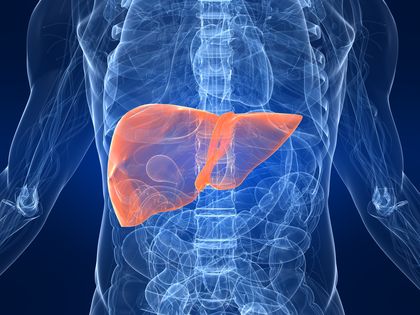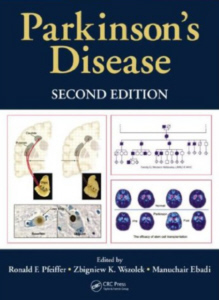.gif) VIARTIS � |
||||||
|
PARKINSON'S DISEASE |
||||||
| � � |
||||||
|
� � � � |
PARKINSON'S DISEASE NEWS � |
� � � � � � � � � � � � � � � |
||||
|
OCTOBER 2012 ������������������ ������������������������������������������������������������������������������������������������������������������������������ 30th October 2012 - New research CIRRHOSIS CAN CAUSE PARKINSON'S DISEASE SYMPTOMS Metabolic Brain Disease [2012] Oct 20 [Epub ahead of print] (R.F. Butterworth) Complete abstract Acquired hepatolenticular degeneration is also known as "Parkinsonism in cirrhosis". Estimates of the prevalence of Parkinsonism in cirrhosis have been reported as high as more than 20 %. Cirrhosis is due to chronic liver disease. For more information go to Cirrhosis. The cause of Parkinsonism in cirrhosis has been attributed to manganese deposition in the basal ganglia, leading to dysfunction of the dopaminergic system. Blood and cerebrospinal fluid manganese concentrations were several times above the reference range.
������������������������������������������������������������������������������������������������������������������������������������������������������������������������������������ 24th October 2012 - New research ODM-101 FOUND TO BE MORE EFFECTIVE THAN STALEVO
Stalevo is a standard drug for advanced Parkinson's patients experiencing end-of-dose wearing-off symptoms associated with L-dopa therapy. Stalevo is an enhanced L-dopa treatment containing three active substances in one tablet : L-dopa and the enzyme inhibitors entacapone and carbidopa. For more information go to Stalevo. Orion do not detail in which way ODM-101 and Stalevo are chemically different. The study included more than 100 patients in Europe. The Principal Investigator said "This phase II study demonstrated that ODM-101 has potential to be significantly more effective than Stalevo in the daily treatment of Parkinson's disease patients with response fluctuations. ODM-101 reduced time periods during the day when patients do not have adequate treatment response. These benefits were possible without an increase in troublesome involuntary movements (dyskinesia)." For more information, go to the News release. � In order to refer to this article on its own click here.� � 23rd October 2012 - New web site THE PARKINSON HUB
22nd October 2012 - New book PARKINSON'S DISEASE, SECOND EDITION Ronald F. Pfeiffer (Editor), Zbigniew K. Wszolek (Editor), Manuchair Ebadi (Editor)
� 13th October 2012 - New research SEASONAL EFFECT ON DOPAMINE Neuroscience Letters [2102]� Oct 2 [Epub ahead of print] (Kaasinen V, Jokinen P, Joutsa J, Eskola O, Rinne JO) Complete abstract The formation of dopamine, the substance whose deficiency causes Parkinson's Disease, has been found to vary according to the season of the year, and the season in which somebody is born. This means that the likelihood of Parkinson's Disease symptoms are likely to change according to the season of the year, and in which season somebody was born
�
��
|
||||||
| � | ||||||
.gif) |
||||||
| � | ||||||
| �2006-2012 Viartis | ||||||
| � | ||||||
| [email protected]� | ||||||
 There
is evidence of damage to, or dysfunction of, dopamine transporters and dopamine
receptors. In many patients L-Dopa and dopamine agonists can be beneficial.
Liver transplantation is usually effective. Parkinsonism in cirrhosis is
characterized by symptoms including hypokinesia, dystonia and rigidity that are
rapidly progressive. Typical features included rapid progression over months,
symmetric akinetic-rigid syndrome, postural but not resting tremor, and early
postural and gait impairment. Neuropsychiatric manifestations were minimal.
For a printable version of this article
There
is evidence of damage to, or dysfunction of, dopamine transporters and dopamine
receptors. In many patients L-Dopa and dopamine agonists can be beneficial.
Liver transplantation is usually effective. Parkinsonism in cirrhosis is
characterized by symptoms including hypokinesia, dystonia and rigidity that are
rapidly progressive. Typical features included rapid progression over months,
symmetric akinetic-rigid syndrome, postural but not resting tremor, and early
postural and gait impairment. Neuropsychiatric manifestations were minimal.
For a printable version of this article
 ODM-101,
a new L-dopa product currently being developed by Orion for the treatment of
Parkinson's disease, has successfully completed Phase II Proof of Concept trial.
The key results indicate that ODM-101 was more effective than Stalevo in the treatment of advanced Parkinson's Disease.
ODM-101,
a new L-dopa product currently being developed by Orion for the treatment of
Parkinson's disease, has successfully completed Phase II Proof of Concept trial.
The key results indicate that ODM-101 was more effective than Stalevo in the treatment of advanced Parkinson's Disease.  Theparkinsonhub
is a new Parkinson's Disease web site that aims to provide patients, carers and
healthcare professionals with the latest news, link and information in the area
of Parkinson�s disease. "Whether you�re wondering �How do you get Parkinson�s
?�, need to know about what it�s like to start working with Parkinson�s or are
wondering about what daily life will be like", they offer a range of resources
for anyone who is in need of information. For more
information, go to
Theparkinsonhub
is a new Parkinson's Disease web site that aims to provide patients, carers and
healthcare professionals with the latest news, link and information in the area
of Parkinson�s disease. "Whether you�re wondering �How do you get Parkinson�s
?�, need to know about what it�s like to start working with Parkinson�s or are
wondering about what daily life will be like", they offer a range of resources
for anyone who is in need of information. For more
information, go to
 Publisher's
description : In recent years, considerable advances have been made in
our knowledge and understanding of Parkinson's disease (PD). In particular,
there has been an explosion of information regarding genetic contributions to
the etiology of PD and an increased awareness of the incidence and importance of
the non-motor features of the disease. Theories regarding the pathogenesis and
pathophysiology of PD have also been refined, and new treatment modalities and
advances have been implemented. Reflecting these changes, this second edition
features new chapters devoted to genetic aspects of PD, non-motor features of
the disease, as well as aspects of the pathophysiology, pathogenesis, and
treatment of PD.
Publisher's
description : In recent years, considerable advances have been made in
our knowledge and understanding of Parkinson's disease (PD). In particular,
there has been an explosion of information regarding genetic contributions to
the etiology of PD and an increased awareness of the incidence and importance of
the non-motor features of the disease. Theories regarding the pathogenesis and
pathophysiology of PD have also been refined, and new treatment modalities and
advances have been implemented. Reflecting these changes, this second edition
features new chapters devoted to genetic aspects of PD, non-motor features of
the disease, as well as aspects of the pathophysiology, pathogenesis, and
treatment of PD.
 The
capacity to produce dopamine was found to be higher in people with Parkinson's
Disease during the autumn (fall) and the winter. The potential was 15% higher
during autumn (fall) and winter than it was during spring and summer. Dopamine
levels were also affected by which season people were born in. People born
during winter and spring were found to have a clearly higher capacity to produce
dopamine compared to people born during the summer and autumn (fall). Therefore,
the season in which somebody is born could cause
Parkinson's Disease to be more or less likely. There was also evidence of season
of birth effects in several neuropsychiatric disorders.
For a printable version of this article
The
capacity to produce dopamine was found to be higher in people with Parkinson's
Disease during the autumn (fall) and the winter. The potential was 15% higher
during autumn (fall) and winter than it was during spring and summer. Dopamine
levels were also affected by which season people were born in. People born
during winter and spring were found to have a clearly higher capacity to produce
dopamine compared to people born during the summer and autumn (fall). Therefore,
the season in which somebody is born could cause
Parkinson's Disease to be more or less likely. There was also evidence of season
of birth effects in several neuropsychiatric disorders.
For a printable version of this article